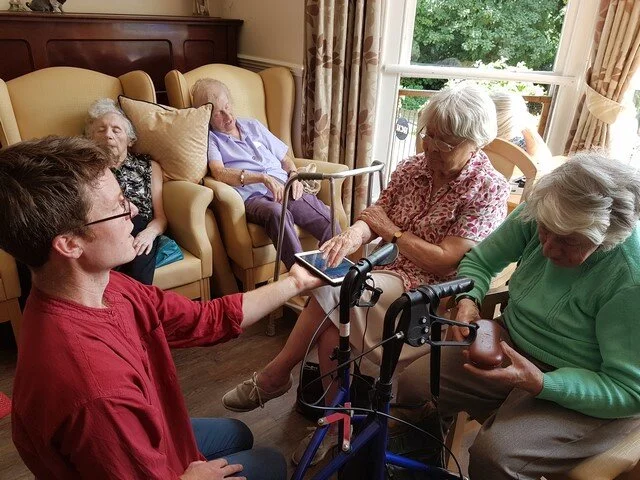Principles are qualities that are present in all situations of practice. ‘Principles‘ contrast with ‘techniques’ which are specific applications of the principle and can change dependent on the situation. The first principle of Rapport-based communication is:
BE RESPONSIVE
To find rapport we must be responsive to a person’s in-the-moment interests and behaviours, joining in warmly with 100% of our attention. If we are not being responsive then we are not doing this practice. An example of non-responsive practice is the playing of a pre-arranged set of songs, the order and performance of which does not change from venue to venue. This is a valid strategy for engagement in a public venue such as a pub or concert hall because the artist is drawing an audience from the general public and those who are interested in the artists music can choose to go of their own volition. The audience in a healthcare setting however is a closed group and, as such, requires a different strategy for engagement, particularly if the individuals in the group have higher levels of social need.
Instead of reading the notes of a score, the practitioner reads the behaviour and needs of the individuals and group, continually looking for ‘offers’ to copy, join in with and celebrate as part of responsive song structures such as ‘I’m in a Singing Mood’ or ‘There’s Music Here Today’. This way of being with people is much more likely to lead to the persons acceptance of the practitioner, increasing the chances of finding mutual rapport and ultimately reducing the persons risk of social isolation.
Each principle of Rapport-based Musical Communication links to the three fundamental needs identified in Self Determination Theory, a psychological theory of needs that is supported by a large body of research. The principle of being responsive relates to the the psychological need of autonomy which refers to being the perceived origin or source of one's own behavior (Ryan & Deci, 2002) ie. to feel that we have control over what we do. By being responsive, the practitioner adopts an interaction style that is supportive of autonomy , facilitating the satisfaction of this fundamental need and the development of rapport.
Reference
Ryan RM and Deci EL (2002). Overview of self- determination theory: An organismic dialectical perspective. In E.L. Deci & R.M. Ryan (Eds.), Handbook of self- determination research (pp. 3–33). Rochester: The University of Rochester Press.
